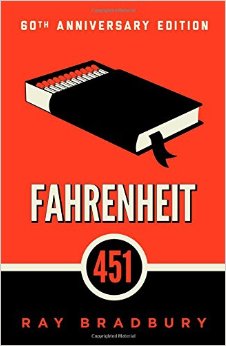 I once had a parent ask me why I had our 7th and 8th grade students reading literature which the local public high school students were reading in their sophomore year (with the implication that I was expecting too much from the students in my class). I responded by asking the parent why the high schools were using middle school texts to teach literature at the high school level.
I once had a parent ask me why I had our 7th and 8th grade students reading literature which the local public high school students were reading in their sophomore year (with the implication that I was expecting too much from the students in my class). I responded by asking the parent why the high schools were using middle school texts to teach literature at the high school level.
I was not intending to be glib. The Huffington Post, for example, treated the same question in the article "American High School Students Are Reading Books at 5th-Grade-Appropriate Levels."
Can parents and teachers rely on anything more than "trial-and-error" when selecting literature which matches the reading ability of their children and students?
Some may turn to the reading lists of various classical schools and recommended curricula, but they might also ask how such lists were compiled.
Those who follow such lists may find that the literature ranges from too simplistic to too challenging only after having attempted them. If a book doesn't work out, one has to deal with wasted money and effort pursuing literature which did not satisfy. It would be nice if one could determine the readability of an appropriate text for a particular age level prior to buying the text and embarking on preparations to digest it.
Enter the world of readability metrics. In a world which approaches reading from the perspective of science rather than art -- and which imagines that statistics and data can improve everything -- it is no surprise that the act of reading has come under the digital scrutiny of measurable quantification as can be evidenced in the results of standardized testing.
If you wish to dabble in this area, you might check out this presentation given at an American Library Association (ALA) conference which explains various "online calculators" and databases for finding books. Detailed explanations of readability formulas may also be found online such as this one which describes the Flesch-Kincaid scale.
You might even consider report of the Council of Chief State School Officers and the National Governor's Association regarding Common Core's "New Research on Text Complexity."
Or if you would simply like to experiment with matching book levels to reading ability, you might try the Lexile Bookfinder or the Accelerated Reader Bookfinder. You can even find Lexile indicators on Amazon (see the left-hand column). See how Barnes and Noble has adopted and incorporated the Lexile framework.
If a child participates in such standardized tests as the Iowa Test of Basic Skills (ITBS) or the NWEA's Measure of Academic Progress (MAP), the teacher test coordinator can probably get the Lexile, AR, or Flesch-Kincaid reading level numbers for that child so that parents or teachers can use them.
In my own experience, the readability scales are not foolproof or entirely reliable. For example, my middle school students claim to have more difficulty reading Captains Courageous which has a Lexile score of 850L than The Trumpeter of Krakow which is rated at 1200L. (The reading levels in my current class range from 465L to 1355L which makes things interesting.)
I still make reference to such scales in an attempt to match books to readers, even though, after teaching literature over the past twenty years, I have a pretty good feel for the difficulty levels of various books for my students. The only problem is: I have not been able to quantify such feelings with statistical metrics.


